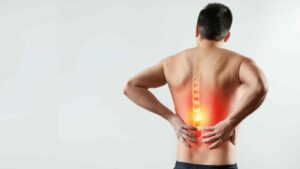Low back pain and sciatica in over 16s: assessment and management

NICE guideline [NG59]
This guideline covers assessing and managing low back pain and sciatica in people aged 16 and over. It outlines physical, psychological, pharmacological and surgical treatments to help people manage their low back pain and sciatica in their daily life. The guideline aims to improve people’s quality of life by promoting the most effective forms of care for low back pain and sciatica.
Recommendations
This guideline includes recommendations on:
Key Points
Exclude specific causes of low back pain, for example, cancer, infection, trauma or inflammatory disease such as spondyloarthritis
Consider using risk stratification (for example, the STarT Back risk assessment tool) at first point of contact with a healthcare professional for each new episode of low back pain with or without sciatica to inform shared decision-making about stratified management.
Consider using risk stratification (for example, the STarT Back risk assessment tool) at first point of contact with a healthcare professional for each new episode of low back pain with or without sciatica to inform shared decision-making about stratified management.
Consider imaging in specialist settings of care (for example, a musculoskeletal interface clinic or hospital) for people with low back pain with or without sciatica only if the result is likely to change management.
Non-pharmacological interventions
Self-management – tailored advice & education. Encouragement to continue with normal activities.
Exercise – Consider a group exercise programme (biomechanical, aerobic, mind–body or a combination of approaches)
Orthotics & Braces- do not recommend
Manual Therapies – Consider manual therapy (spinal manipulation, mobilisation or soft tissue techniques such as massage) for managing low back pain with or without sciatica, but only as part of a treatment package including exercise, with or without psychological therapy. DO NOT offer Traction
Acupuncture -Do not offer acupuncture
Electrotherapies – do not offer Ultrasound, Tens, Pens or Interferential
Psychological therapy -Consider psychological therapies using a cognitive behavioural approach for managing low back pain with or without sciatica but only as part of a treatment package including exercise, with or without manual therapy
Return-to-work programmes -Promote and facilitate return to work or normal activities of daily living
Pharmacological interventions
See Here
Non-surgical interventions
Spinal injections – Do not offer spinal injections for managing low back pain.
Radiofrequency denervation -Consider referral for assessment for radiofrequency denervation for people with chronic low back pain when:
- non-surgical treatment has not worked for them and the main source of pain is thought to come from structures supplied by the medial branch nerve and they have moderate or severe levels of localised back pain (rated as 5 or more on a visual analogue scale, or equivalent) at the time of referral.
- Only perform radiofrequency denervation in people with chronic low back pain after a positive response to a diagnostic medial branch block.
Do not offer imaging for people with low back pain with specific facet join pain as a prerequisite for radiofrequency denervation.
Epidurals -Consider epidural injections of local anaesthetic and steroid in people with acute and severe sciatica. Do not use epidural injections for neurogenic claudication in people who have central spinal canal stenosis.
Surgical interventions
Surgery and prognostic factors -Do not allow a person’s BMI, smoking status or psychological distress to influence the decision to refer them for a surgical opinion for sciatica.
Spinal decompression – Consider spinal decompression for people with sciatica when non-surgical treatment has not improved pain or function and their radiological findings are consistent with sciatic symptoms.
Spinal fusion -Do not offer spinal fusion for people with low back pain unless as part of a randomised controlled trial.
Disc replacement – Do not offer disc replacement in people with low back pain.

































